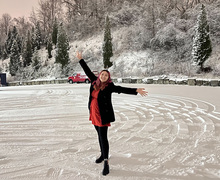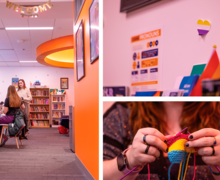Syracuse community members debate I-81 solutions at City Hall meeting
Catherine Leffert | Asst. News Editor
More than 100 people attended the meeting, held Tuesday night in City Hall.
Syracuse community members voiced their thoughts on potential solutions to the Interstate 81 viaduct’s uncertain future at a public meeting in Syracuse City Hall Tuesday night.
More than 100 people attended the meeting. Joe Driscoll, Syracuse’s 5th District Common Councilor and the moderator of the forum, said he thinks the I-81 renovations could be one of the most important decisions the city will have to make.
The meeting came as legislators across New York state continue to debate the future of the highway, which is rusting and has been marked “structurally deficient” and “functionally obsolete” in some places. The New York State Department of Transportation has narrowed down three possible renovation plans: dispersing traffic along city streets, demolishing and replacing the overpass or digging the highway into an underground tunnel. It remains unclear which plan will move forward.
At the meeting, Sharon Owens, Syracuse’s deputy mayor, and Greg Loh, director of city initiatives, presented the benefits of the community grid. Loh said that a community grid will function as an investment funnel into local businesses and will positively affect regional transportation.
“Only the community grid meets the higher standard with land transferred to a local development commission to oversee its productive reuse generate a transformative economic opportunity,” Loh said. “Again, not just for the city, but with a cooperative approach, benefits to communities throughout the county.”
Local businessman Joe Bright, vice president of Dunk & Bright Furniture — located just west of I-81 in Syracuse’s South Side — spoke at the meeting as a representative of Save 81, a group that wants to replace or repair the current overpass rather than build a community grid. He said when he polled his customers, 16 percent said they wouldn’t shop at Dunk & Bright if they needed to navigate city streets.
“That’s an unfortunate reality for a neighborhood that’s historically struggled to maintain healthy businesses,” Bright said.
After Bright spoke, several pro-community grid representatives gave their perspectives on why they think that option is best for the community. Diana Ryan, a member of Aqua Action CNY, said she believed the community grid could give the city an opportunity to replace water pipes.
“We should not base, looking forward on the last hundred years of technology. We should not use a rearview mirror to look forward in this project,” said Robert Haley, another community grid supporter and an architect and co-director of the Urban Design Center of Syracuse.
Yusuf Abdul-Qadir, director of the central New York branch of the New York Civil Liberties Union, said the I-81 viaduct facilitates racial segregation in Syracuse.
“We understand that the reality that I-81 as it stands serves as a proverbial ‘whites only,’” Abdul-Qadir said. “We have the opportunity to make Syracuse, Onondaga County and CNY rebound in ways that we never have before.”
After the representatives spoke, Driscoll allowed attendees to give two-minute statements. Most people spoke in support of the community grid, while others said a new overpass could be architecturally beautiful. Some people said they just wanted the cheapest option to move forward.
Published on June 13, 2018 at 12:04 am
Contact Catherine: ccleffer@syr.edu | @ccleffert





